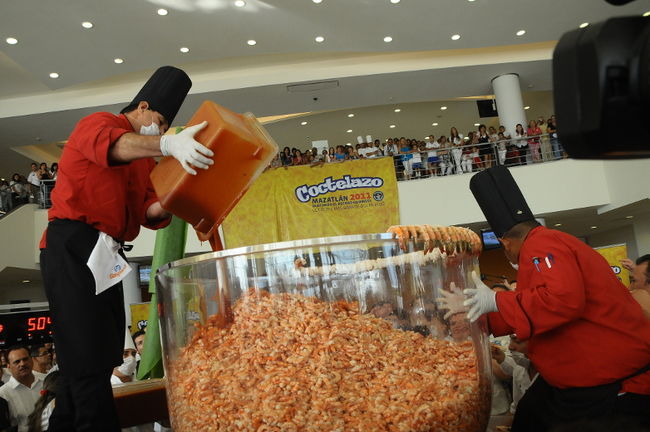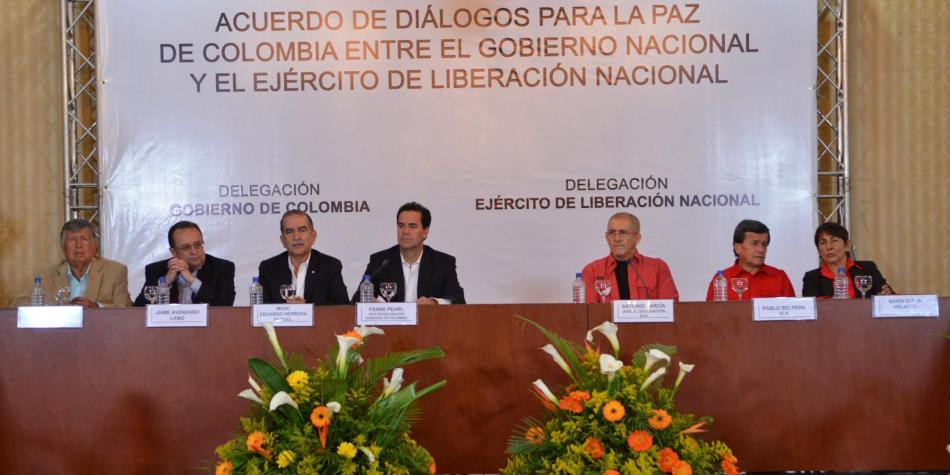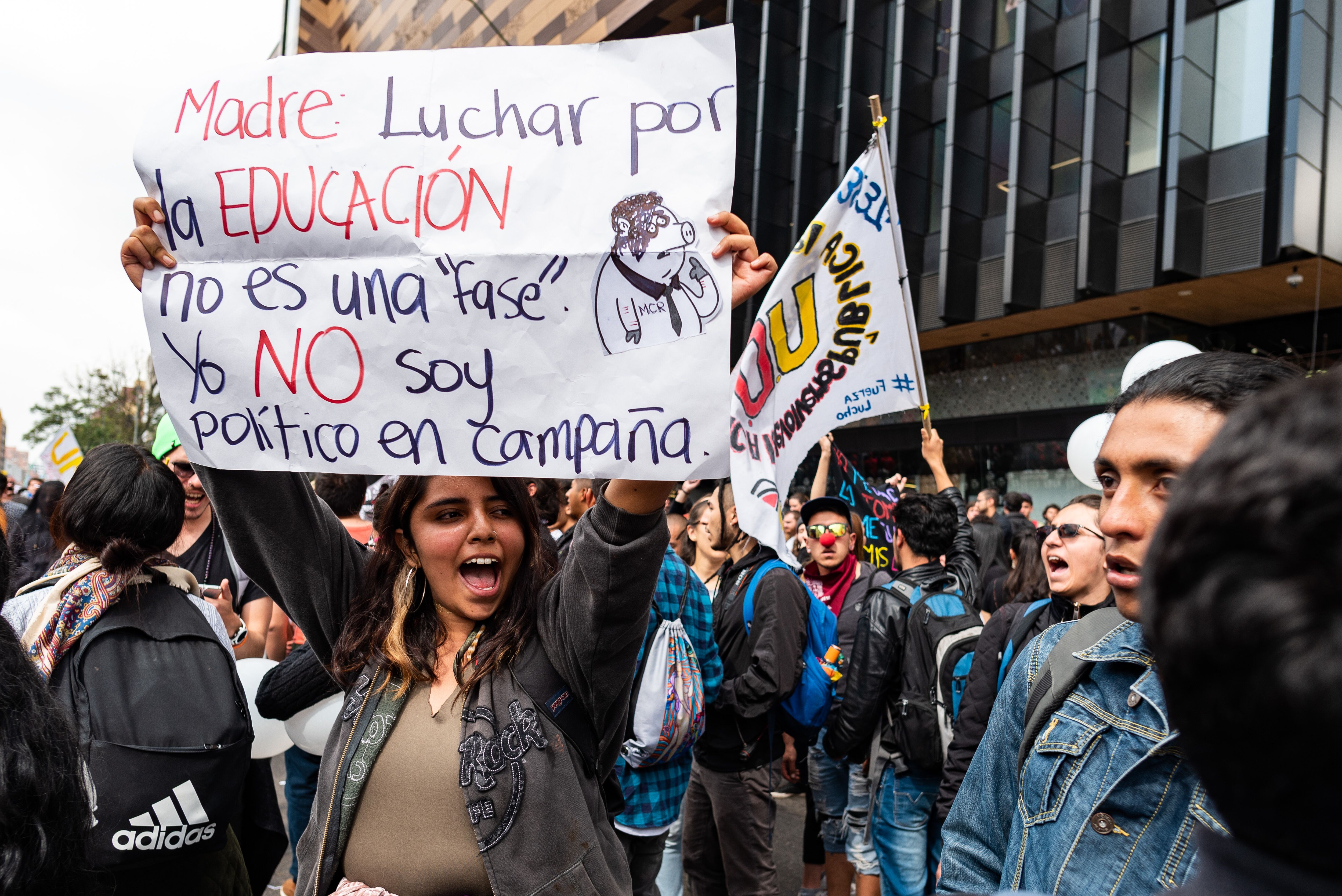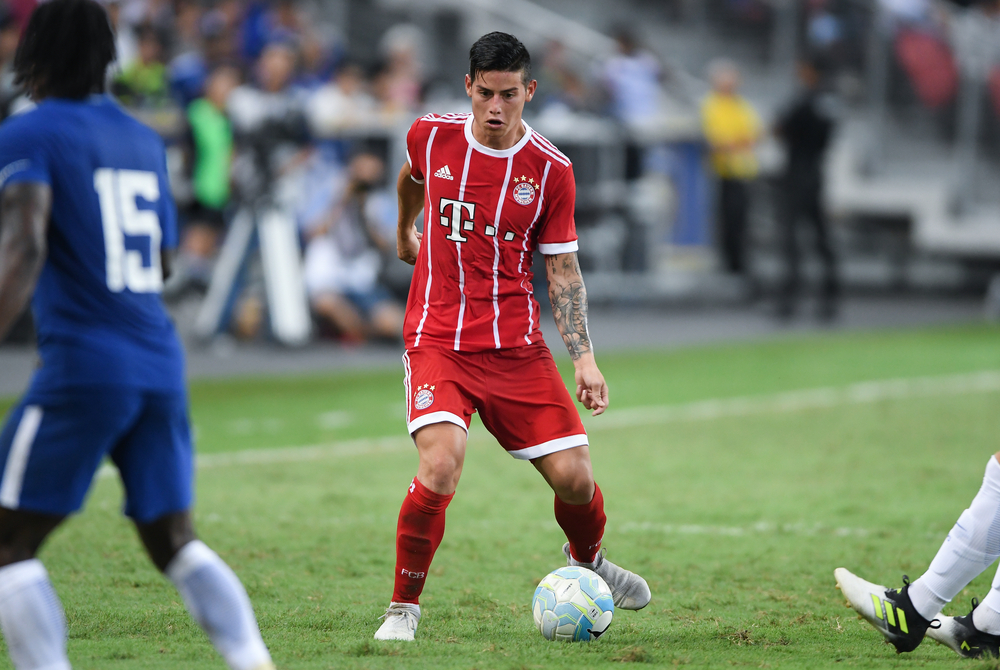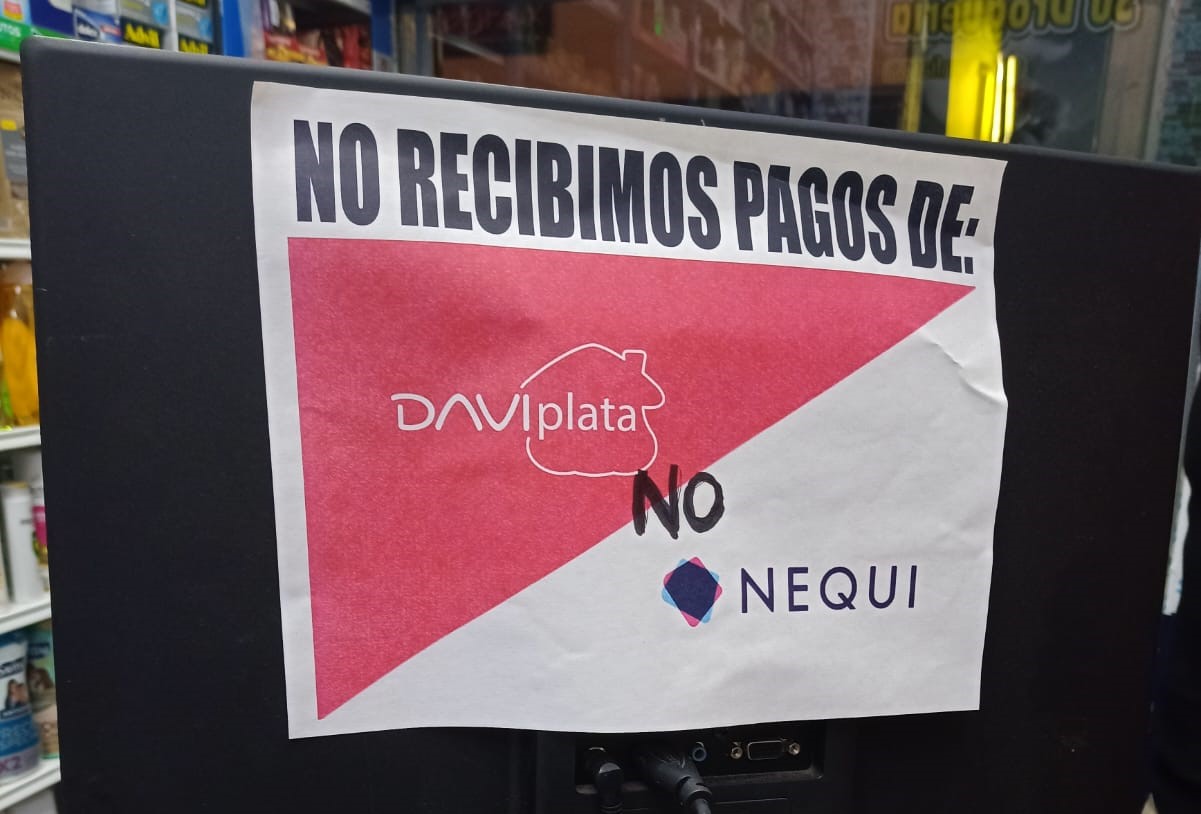Bogotá’s protests against recent state killings started off in a passionate yet peaceful manner. Here’s how the day unfolded.
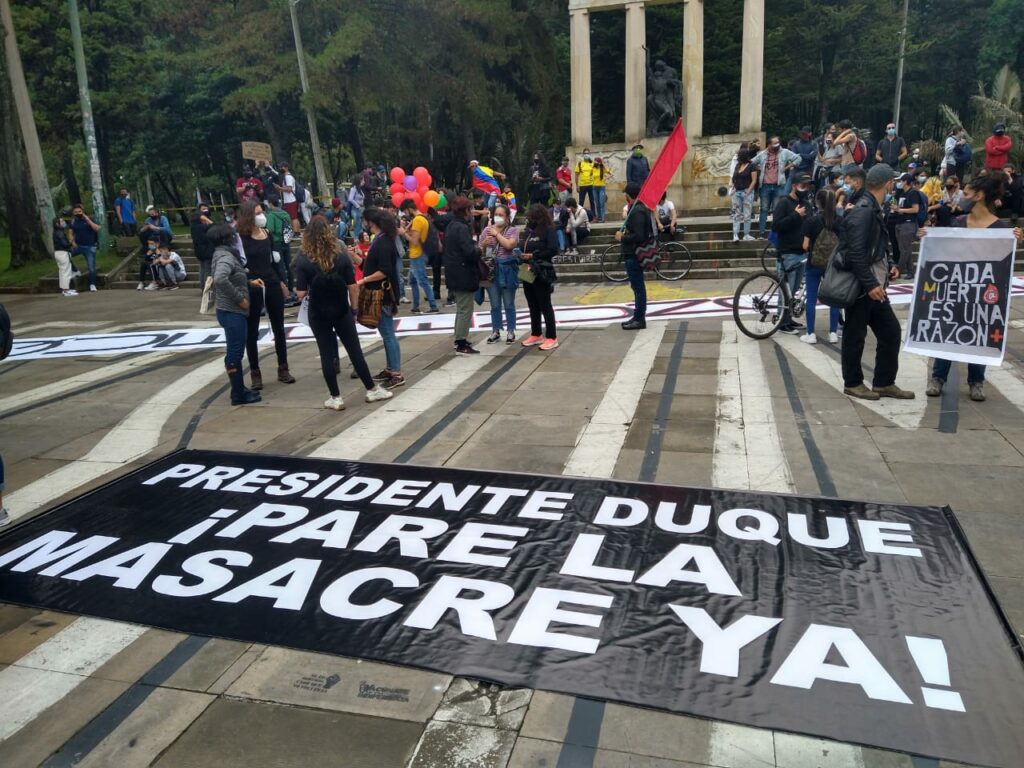
9am: Protestors gather early
At 9am, a few people started to gather in the shadow of the Rafael Uribe monument in the Parque Nacional. Their chants of “Uribe, Uribe” were aimed at Álvaro, not Rafael though, and were less than complementary. With transport closing at 3pm, there was a need to get out early – the Bogotá philharmonic orchestra kicked off proceedings in Parkway at 8am.
At half nine the demonstrators were loud but still outnumbered by the groups of police waiting further up the park. Half an hour later, that had changed as the gathering of various anti-administration groups rapidly swelled to hundreds, then up to a couple of thousand. From there it stayed constant, some people staying and others moving away or sitting on the grass.
The atmosphere was deeply passionate, befitting a protest against the killings of young people. But it also stayed positive. This was no wake, but rather a call to arms and resistance. There were chants. Flags and banners were unfurled and everywhere there were drums to keep up the energy. The most common sign by far was a simple Colombian flag, sometimes inverted.
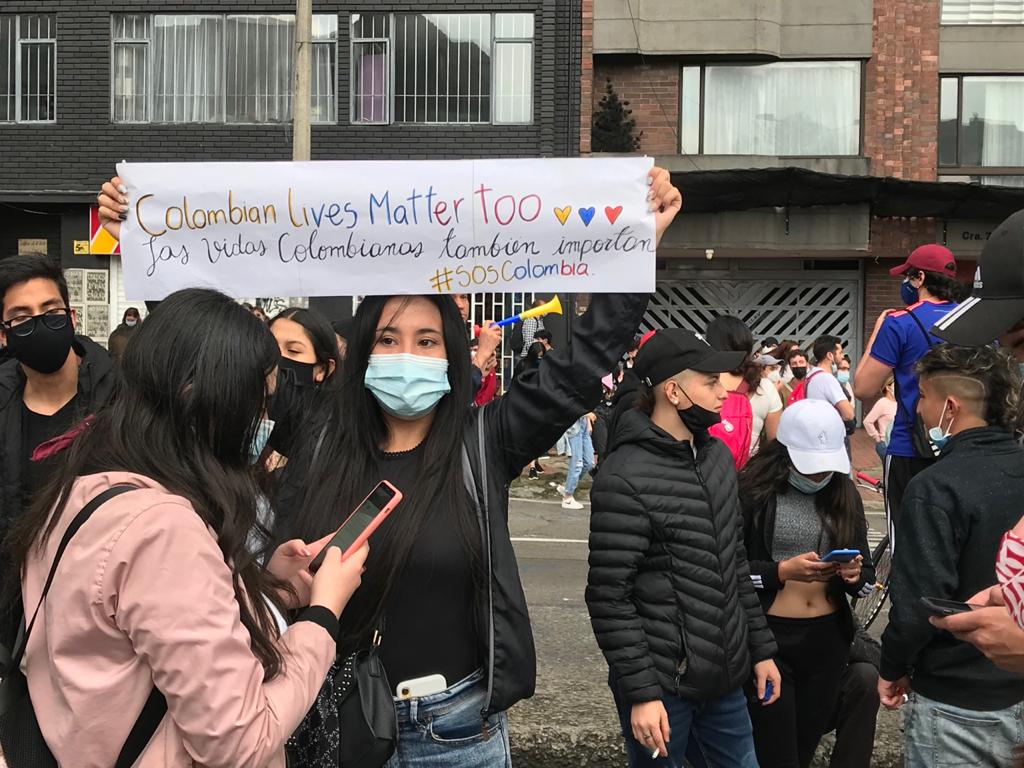
The police, to their credit, have so far stayed at the extreme fringes and not yet intervened in the main demonstrations. It remains to be seen how long that will continue. Last week everything started off peacefully and only later turned ugly.
Now that the unpopular tax reform is gone, the theme of day appears to be calling for president Duque’s resignation, which seems optimistic. It’s unlikely he would consider retiring with a year to go on his mandate and no pressing scandal directly connected to him. An important secondary call is for the reforma de salud to be withdrawn as the tax reform was.
11am: On the march
Around 11am, the protests became more fluid, as some groups headed north up the séptima, seemingly heading for Parque de los Hippies and/or Héroes. There was some chatter among the groups of going into Cedritos again as well. Other splinters preferred to head south towards the Plaza Bolívar as is traditional.
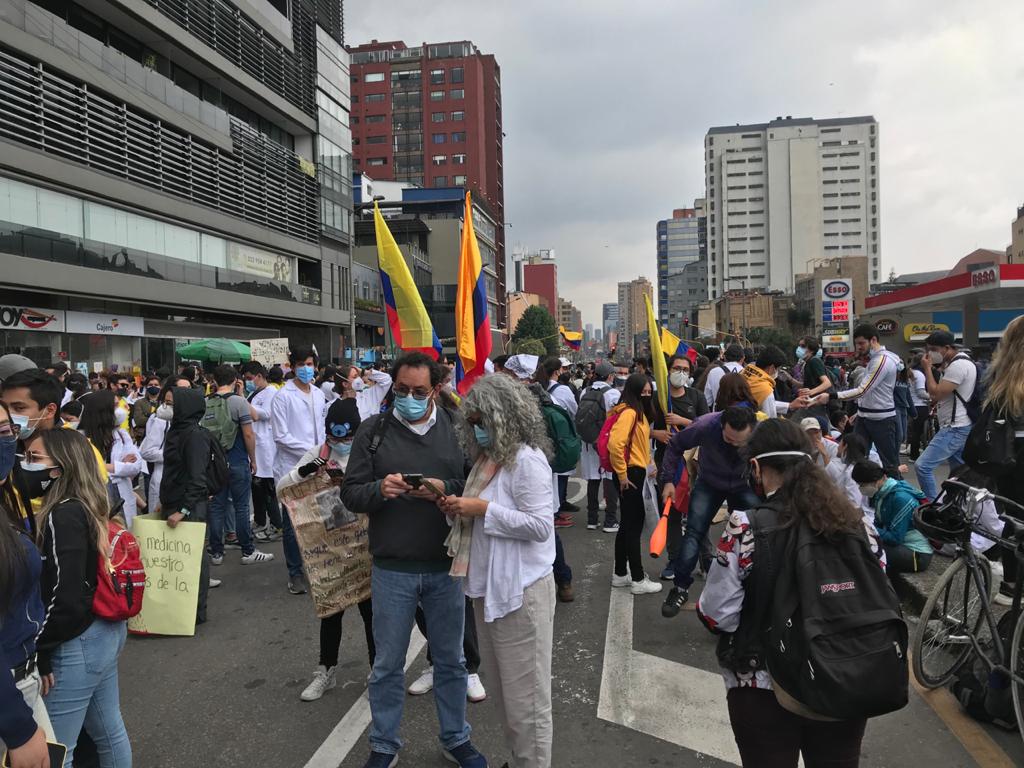
There are big groups at the Universidad Nacional, according to our reporters there. The centre and Parque de los Hippies are both getting busier, with thousands at both points. It’s clear that recent police and military action in Bosa, Buga, Cali and other parts of the country has simply led to more people protesting.
1pm: Dampened but undeterred
With thunderstorms overhead, some sheltered from the rain while others continued to march.
Bogotá mayor Claudia López said it was a miracle that nobody had died yet in the capital. “Life cannot continue like this,” she insisted, saying the mayors of the country spent their nights trying to control the violence and their days visiting hospitals.
She went on to say, “Every day we have fewer peaceful protests and more vandalism.” Calling it a vicious cycle, she said that when there is more vandalism, there is more intervention from the police and ESMAD.
She added, though, that it’s not enough to reject the vandalism without also rejecting the abuse of force. The mayor called on the government to find a way to dialogue with the young people who are protesting. “These are our young people,” she said. “These are young people who are hurting, who are attacked, who are unemployed, who are poor, who are in the streets of Bogotá.”
By 2pm, almost 5,000 people had gathered in the Parque Nacional, and another 2,000 were estimated to be by the Universidad Javeriana. Another 5,000 had massed by the Universidad Nacional, 6,000 at Heroés, and 1,500 motorcyclists were converging on Campín. There were groups of anywhere between a few hundred and a couple of thousand reported in various other parts of Bogotá. With transport almost non-existent in places, many people just couldn’t get to the central protests and had to demonstrate locally.
As the afternoon wears on, President Duque attempts to continue the narrative that vandals – and not the police force – are to blame for the destruction.
There’s some truth in that: The Plaza Bolívar was only cleared after an hour or so of stone throwing and a half-hearted attempt to storm the senate building. We hold state actors to a higher account, but it’s fair to mention that in this particular case there was provocation.
As the rain cleared, the séptima saw marches both north and south. Some headed to reinforce the centre and others migrated to Parque de los Hippies on Calle 60. The atmosphere there was akin to the day’s start, with drummers, flags and bonfires on the street. The road was blocked to traffic and resistance took the form of a party. It was reminiscent of 2019, when Hippies became a sort of free zone for a few days. Interestingly, the police presence there was limited and non-confrontational.
Late this afternoon, various hospitals called on protestors to respect medical missions and supply trucks. The road closures mean that hospitals in Cali and Medellín are running short on supplies, including oxygen for ICU patients.
6pm: Rain stops play
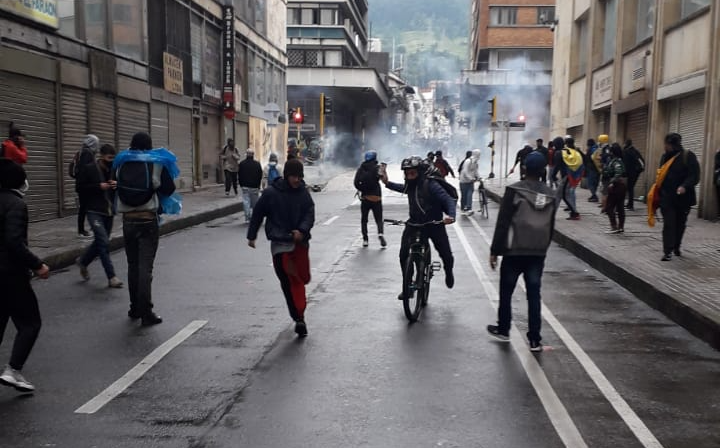
Darkness falls, along with rain, and the protests are dispersing. The city centre has been cleared and other groups are fading away. Even the large takeover of Parque Hippies has been forced away by the downpour. Stories of violence are already emerging.
As with previous nights, we can hear the cacerolazos as we type. The spontaneous pot banging became a way for people to peacefully protest police violence in 2019. The tradition has continued in the last week, both from the streets and from peoples homes, as Colombians make their discontent heard.
So far the use of force seems to be less intense than in previous nights, and we can only hope that continues.

